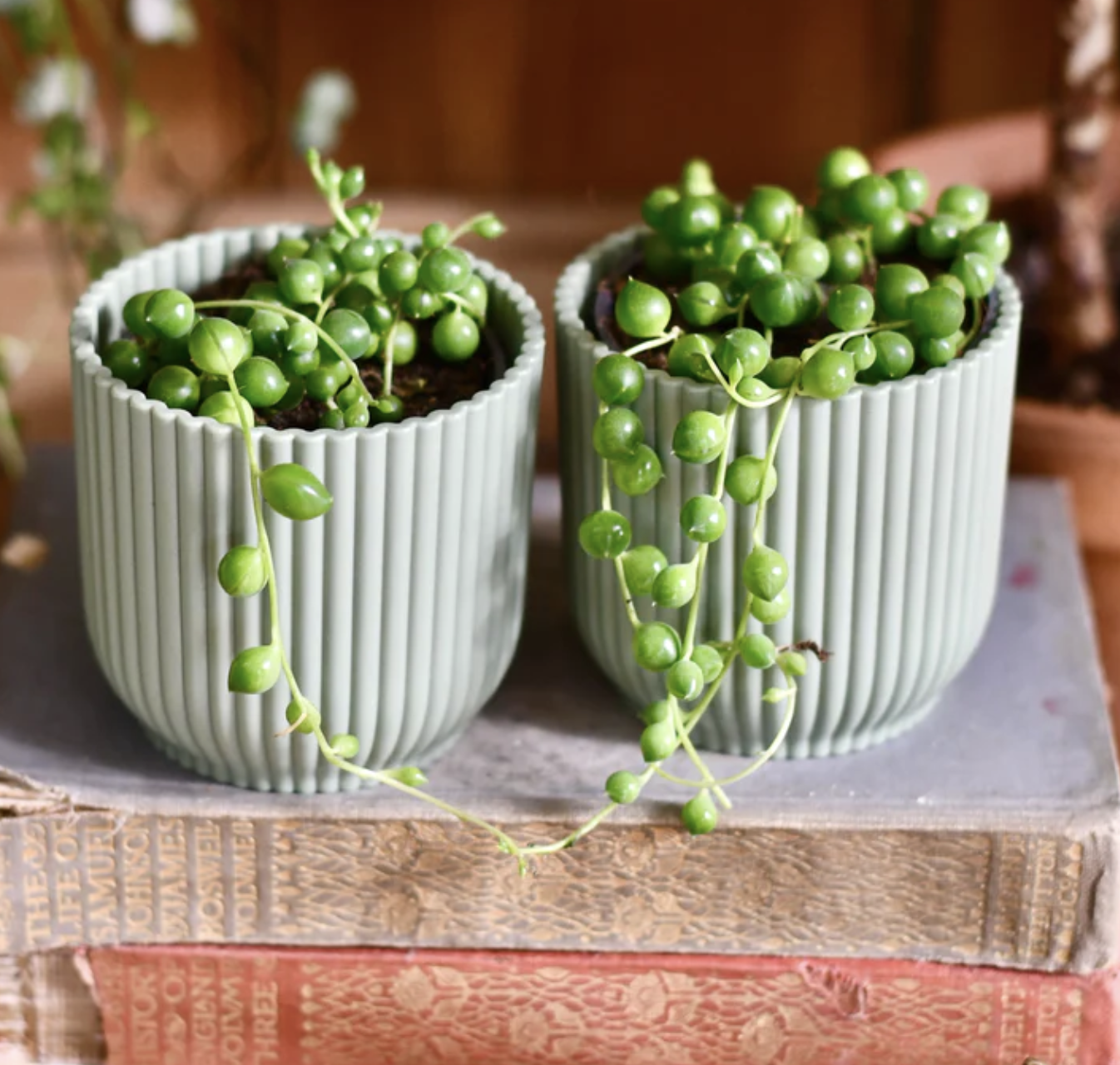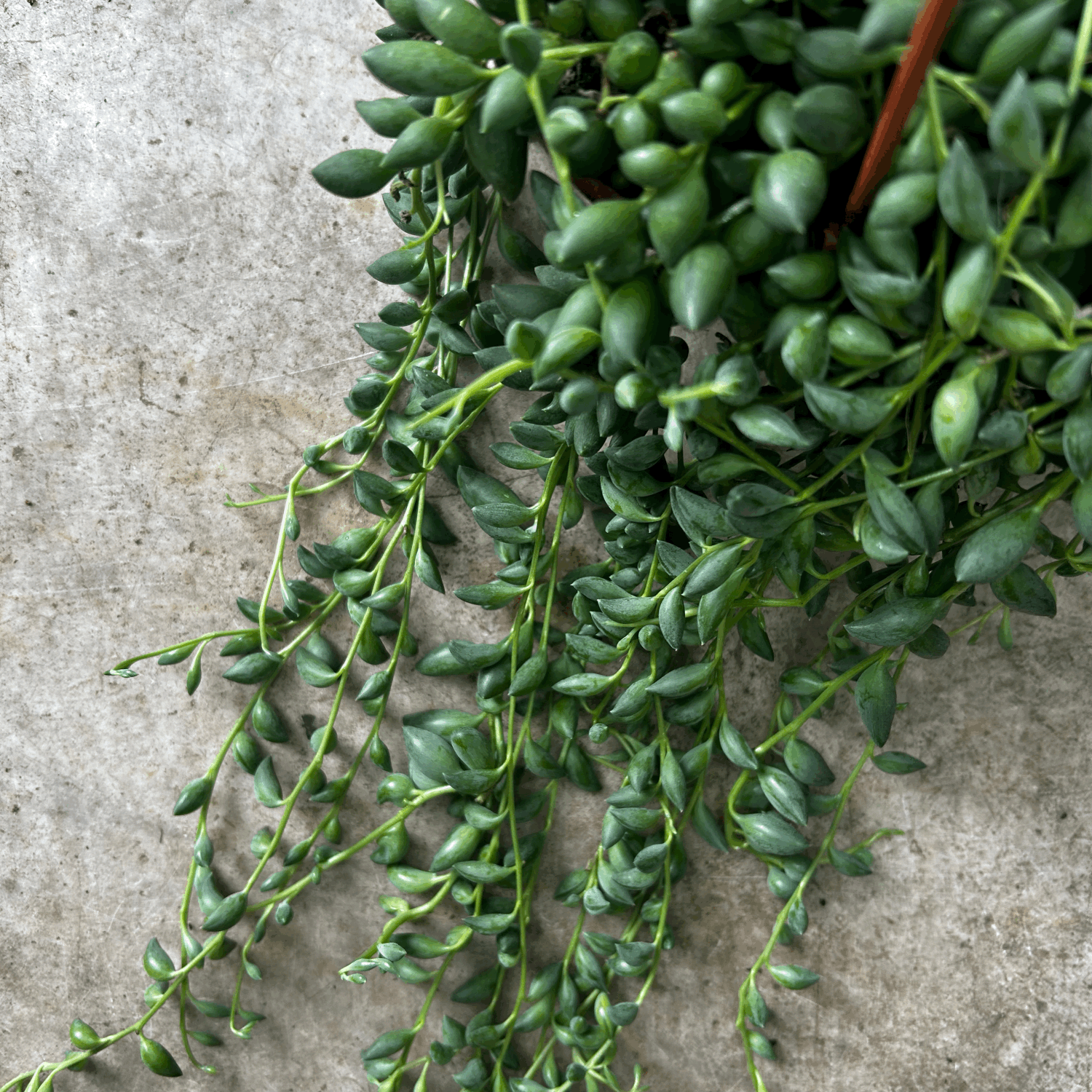The string of pearls care guide to ensure a green and healthy plant
Say goodbye to sad succulents with this expert advice
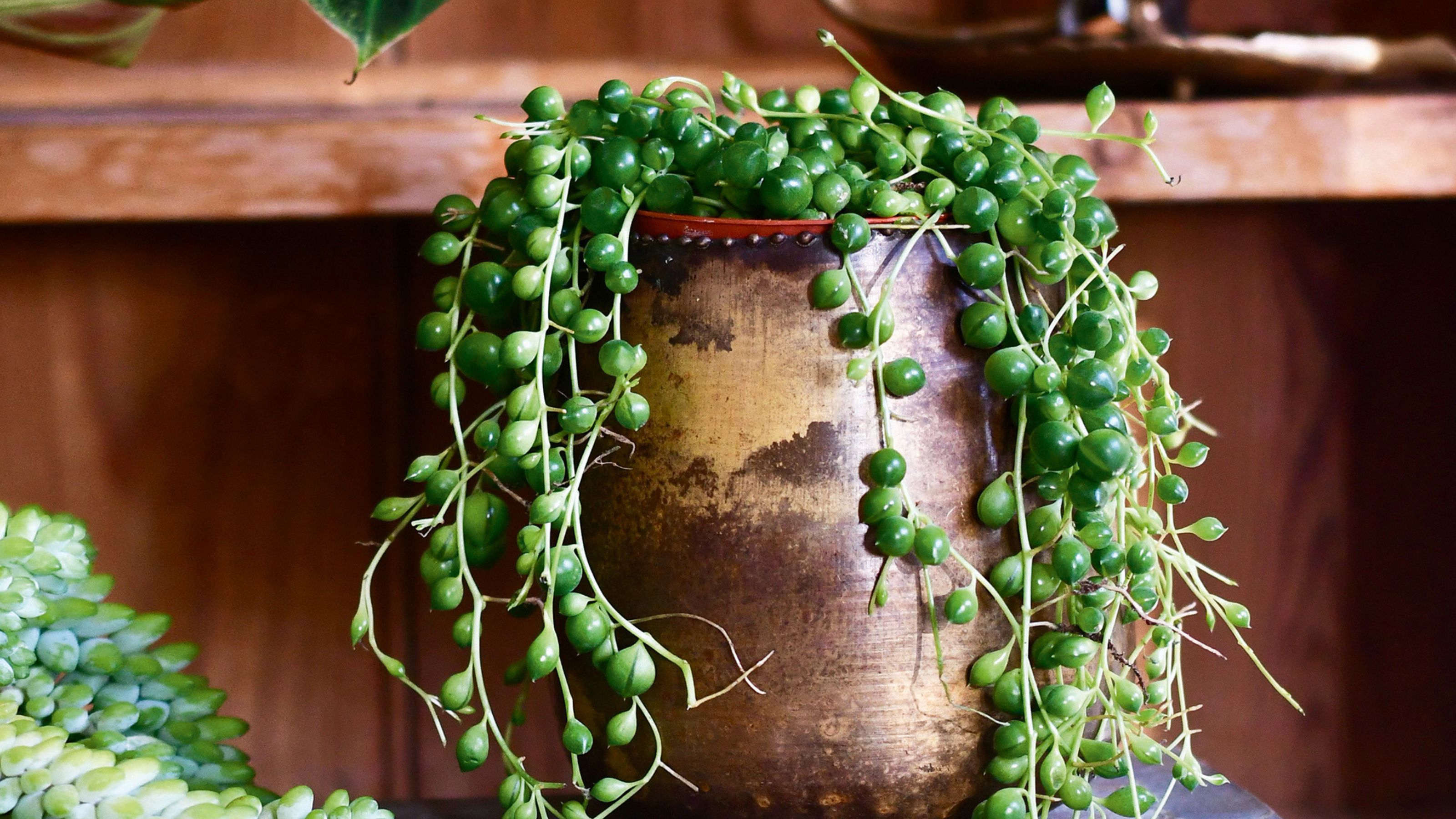

String of pearls have risen to fame in recent years – becoming a popular social media sensation and a must-have for any houseplant enthusiast. But there's definitely a knack to string of pearls care, so we've spoken to the experts to make sure we're giving them the best conditions and treatment possible.
Loved for its unique, delicate, trailing aesthetic, it is the perfect house plant idea to add to a beautifully curated shelf or to dress an otherwise bare window. So let's discover more about it...
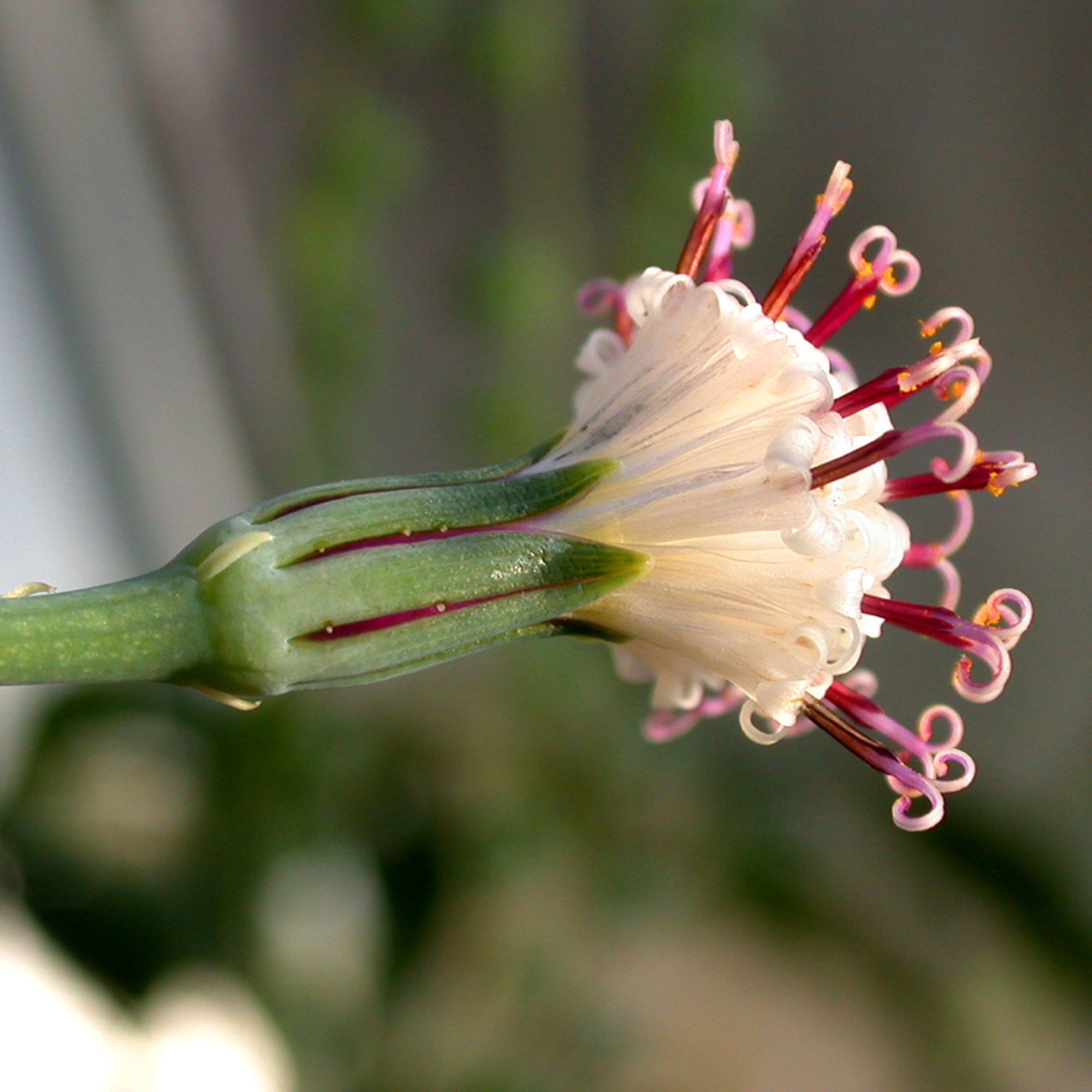
String of pearls care
One of the most Instagrammed house plants, string of pearls is named after the way its beautiful orb-like leaves trail down on thin, delicate stems.
Its beauty isn’t just in its leaves, though. ‘When this plant flowers, it produces small white inflorescences, with a cinnamon scent,’ adds Natalie Bourn, shop manager of Between Two Thorns.
As with any succulents, less is more – which makes the string of pearls one of the most easy to care for houseplants.
We all know how beautiful succulent garden ideas can be, so why not bring a bit of that botanical charm into your home? ‘Perfect for novices, it is an ideal hanging plant and looks great with its leaves tumbling over the edge of the pot,’ says Tom Cook, houseplant buyer at British Garden Centres.
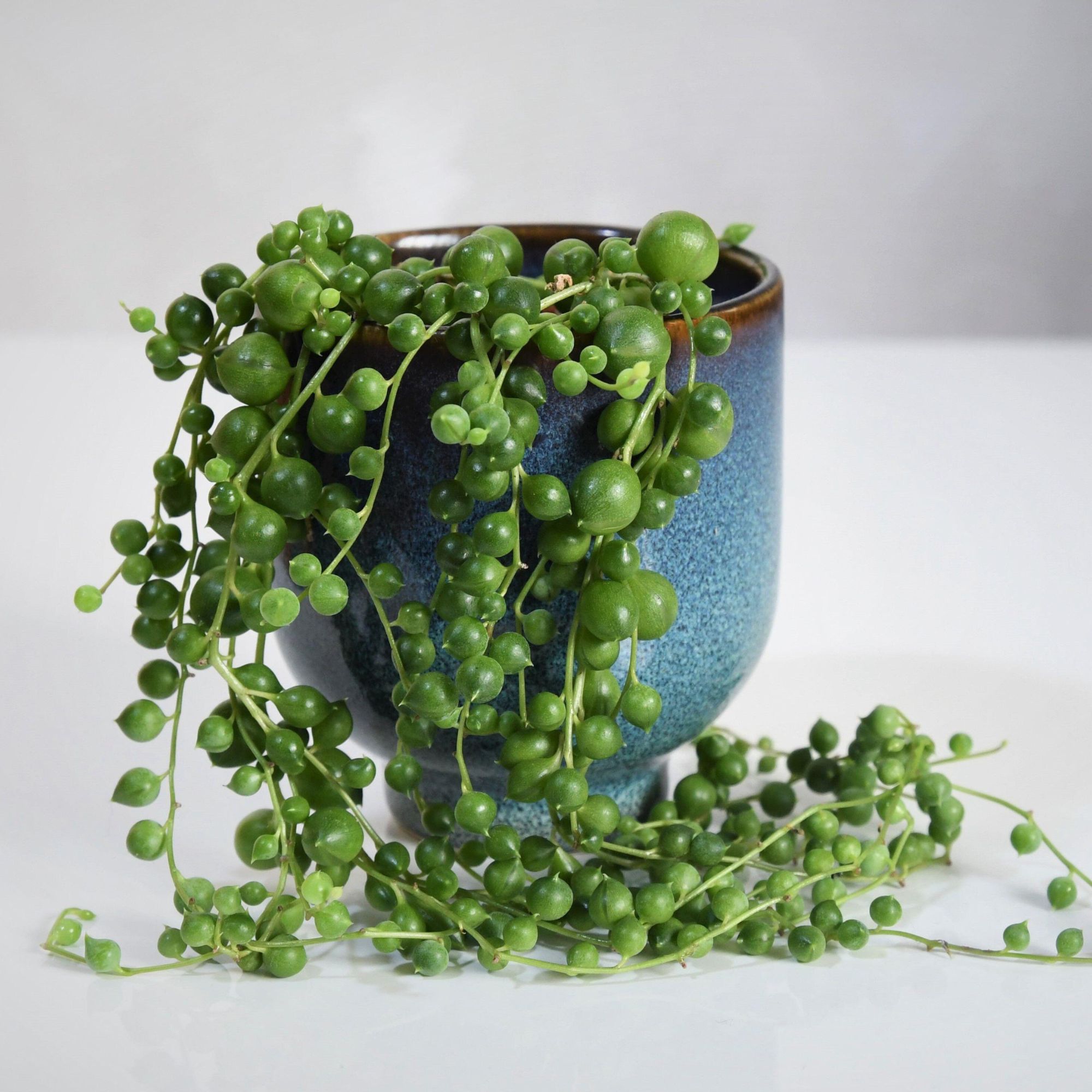
What you will need
- String of Pearls
- Plastic pot with drainage holes – one size larger than the size of the plant bought
- Decorative pot without holes
- A liquid houseplant fertiliser, for example, Westland Houseplant Fertiliser on Amazon
- A trowel
- Cactus compost, such as Westland Houseplant Cactus mix on Amazon
- Plastic tray for watering
Where to buy string of pearls
Wanting to embrace that urban jungle room look? Then a string of pearls is a must.
Get the Ideal Home Newsletter
Sign up to our newsletter for style and decor inspiration, house makeovers, project advice and more.
String of pearls can be purchased in many forms from affordable rooted cutting through to fully established billowing plants. Garden centres often have a few options available but can be pricey. This leads prospective plant parents to look online.
However, when purchasing a plant online it is important to buy from a reputable source. Our guide to the best indoor plants: where to shop online provides a wide range of safe sellers, helping you to make an informed decision.
‘Since it is a really fast-growing plant, a string of pearls is perfect if you like to feel rewarded for your hard work,’ says Jo Lambell, founder of Beards & Daisies. ‘It is also said to symbolise purity and loyalty – so makes a great gift for a loved one. Making it is one of the best houseplants to boost wellbeing.'
Here are some of our favourites for purchasing string of pearls:
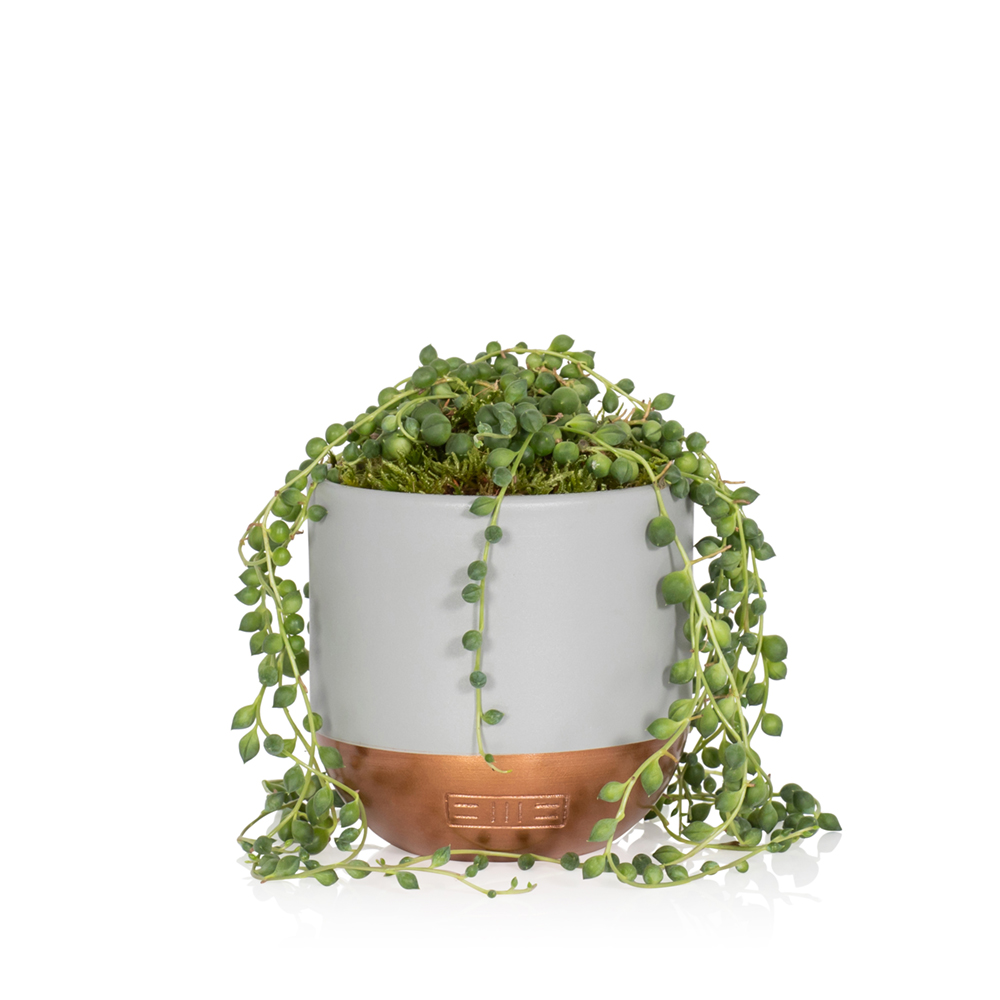
Best for gifting
This pretty string of pearls is sold in a beautiful grey ceramic with copper accent which can be personalised to make it extra special.
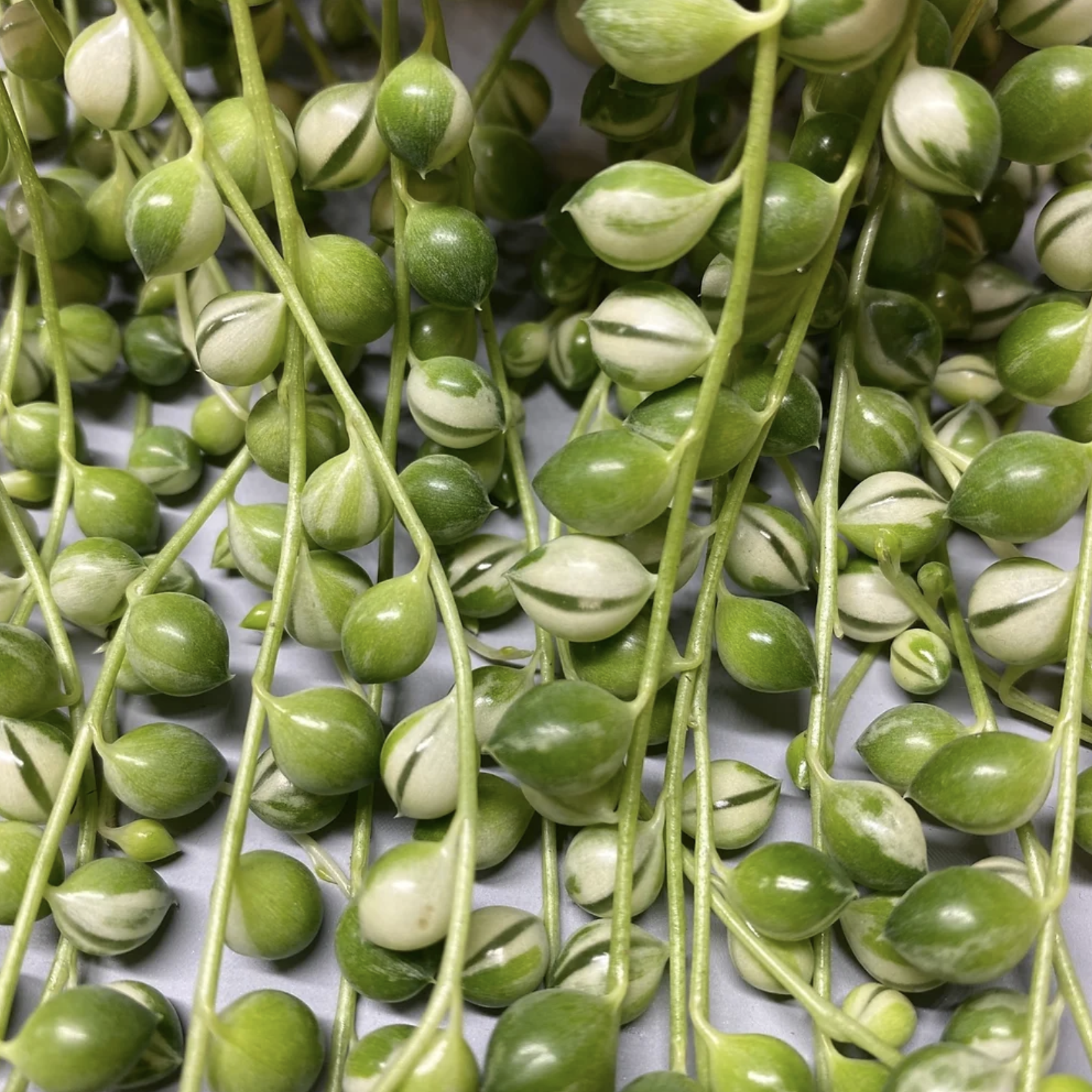
Best for a variegated string of pearls
Most string of pearl plants are completely green – however, there are lots of variegated varieties that add depth to the look.
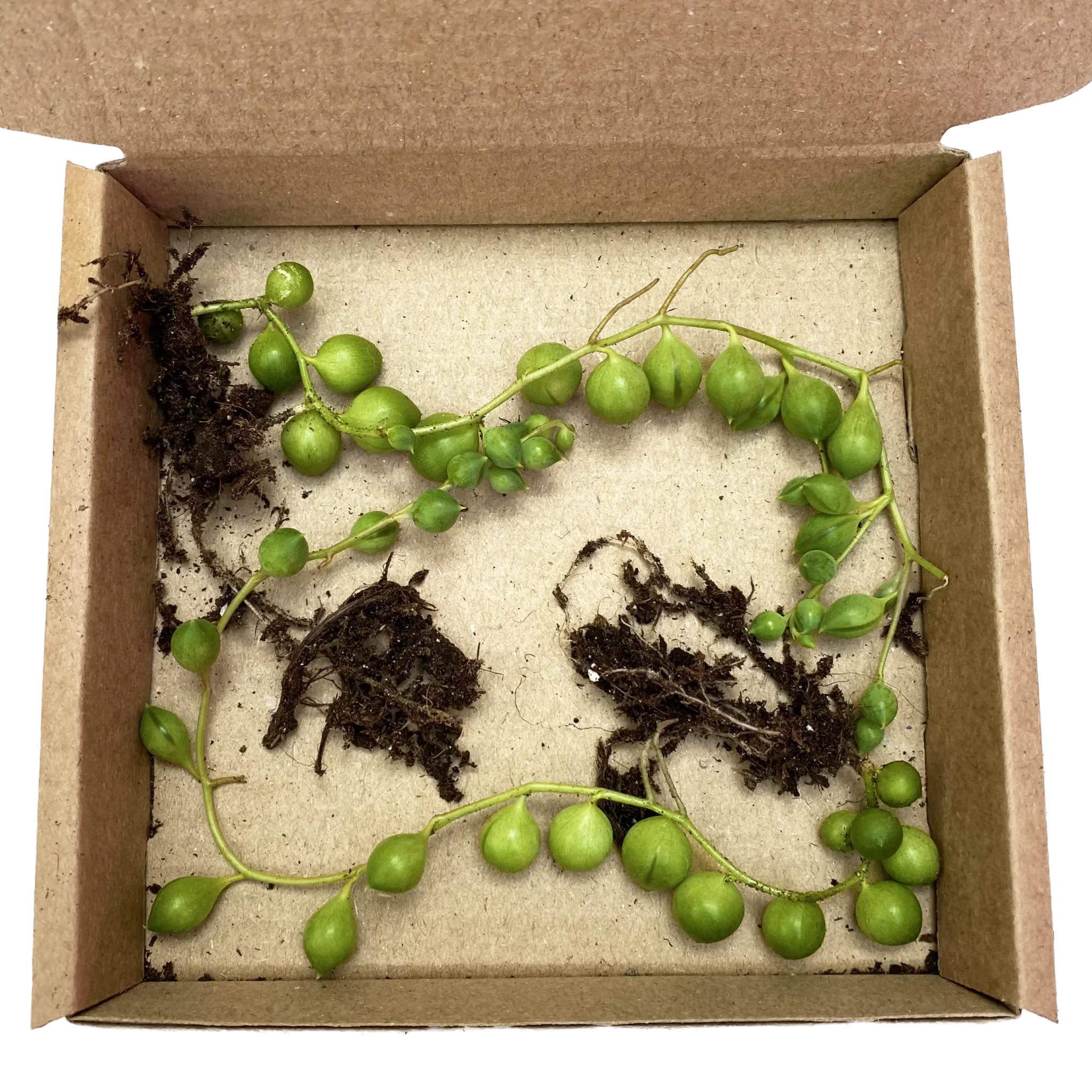
Best for cuttings
The most affordable way to add a string of pearls to your home is by purchasing a rooted cutting. Priced at just £1.50, they are a great way to expand you collection
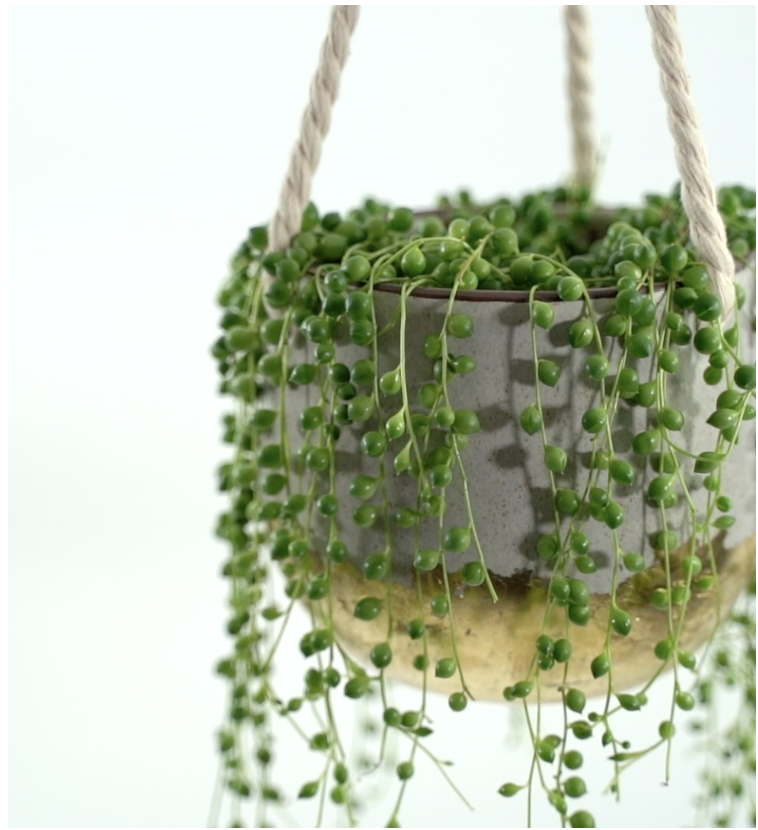
Best for a large string of pearls
This 30-40cm string of pearls is available with the option to add a decorative pot. There is a colour and style available to suit every scheme.
Where should I place my string of pearls?
One of our favourite living room house plant ideas, string of pearls can be grown in any room of the home. However, it's important to ensure that your plant has the climate it needs in order to thrive – it's the first step in string of pearls care, after all.
Indigenous to the rocky terrains of South Africa, string of pearls thrive in a habitat that replicates this environment. ‘These plants need well-draining soil that is made up of at least 50 per cent grit, sand and perlite, similar to the arid regions
it originates from,’ says Natalie, shop manager from Between Two Thorns.
If you don’t want to make your own potting compost, Emily Lawlor, owner of Happy Houseplants, suggests cactus compost – such as Coco & Coir Cactus Compost on Amazon – as a good alternative.
Access to bright but indirect sunlight is also key – ideally six hours a day. ‘We suggest moving your plant seasonally: winter calls for a windowsill placement to maximise sunlight exposure, while summer necessitates a shadier spot to prevent sunburn,’ explains Emily.
What temperature can string of pearls tolerate?
Houseplant expert Tom suggests picking a spot with a temperature of between 21ºC and 27ºC as when too cold – or too dry – string of pearls will drop their leaves. This is easy to solve but it can prove problematic in houses with pets or young children as the pearls are toxic, causing gastrointestinal upset.
Keep the plant out of reach and ensure that even dropped pearls aren’t readily accessible.
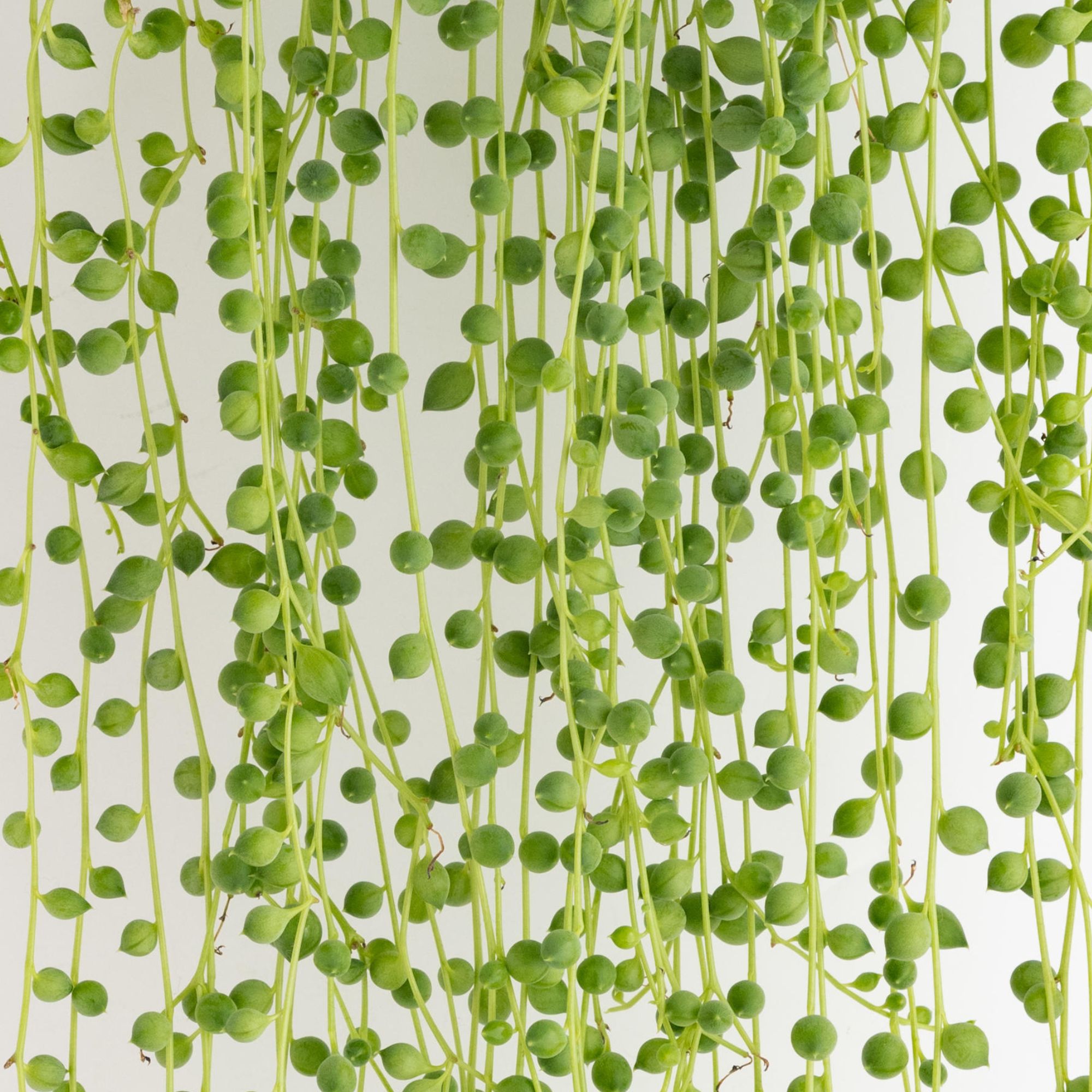
How often should I water string of pearls?
Just as with most houseplants, watering is important to get right for correct string of pearls care.
Since the string of pearls stores water in its leaves, it doesn’t need frequent watering – in fact, over-watering is the most common cause of failure. ‘The plant only needs watering every fortnight in summer and then monthly in winter,’ advises Tom.
Do string of pearls like to be bottom watered?
Since the pearls house the plant’s water reserves, they also serve as a great tell to identify if watering is due. ‘If the pearls appear slightly ‘deflated’ then they are not full of water so need a drink,’ says Natalie from Between Two Thorns.
‘To avoid the leaves rotting, water from below by placing it in a tray and letting it soak for around 15 minutes. Do not mist this plant.’
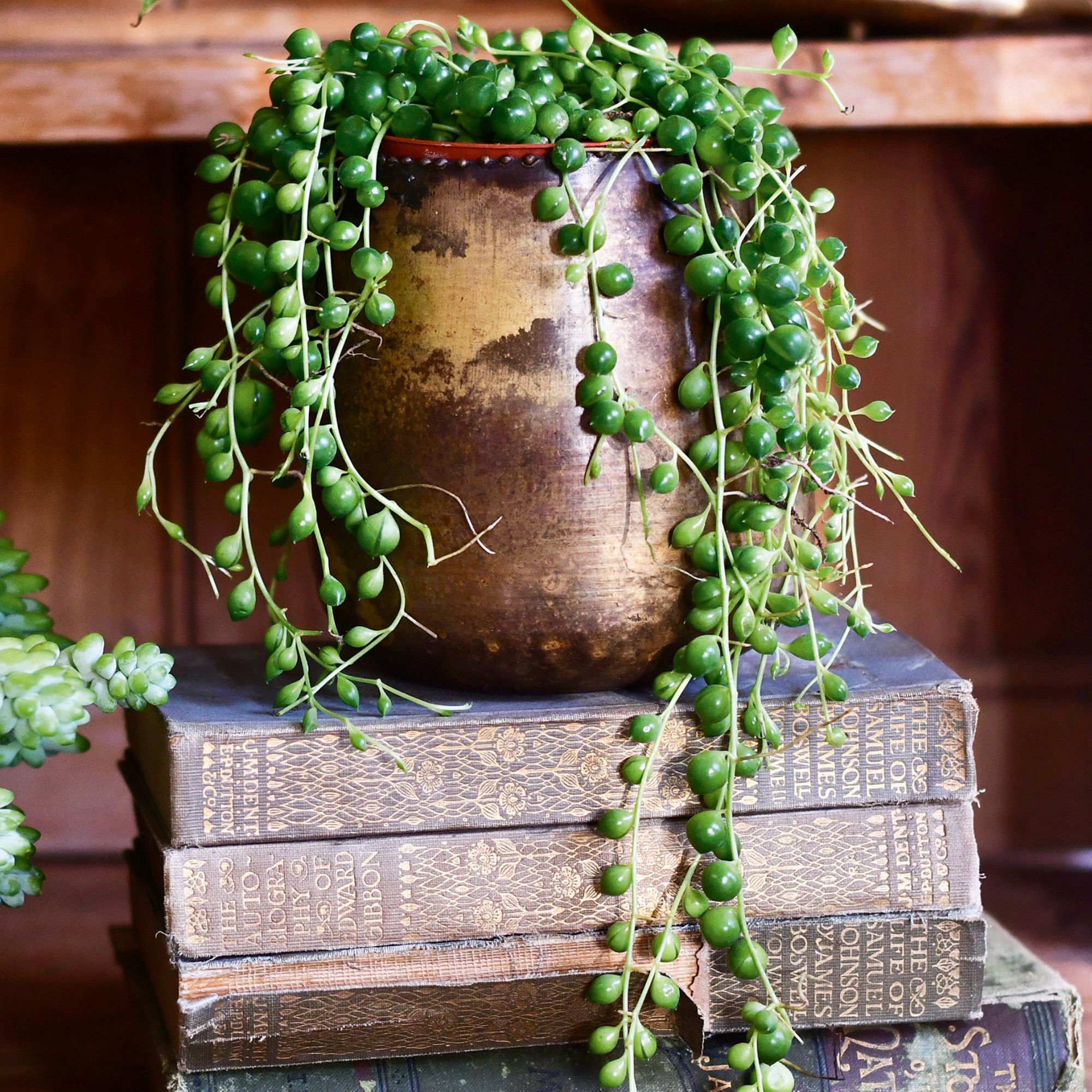
When should I repot a string of pearls?
Due to its beautiful trailing growing pattern, string of pearls really lends itself to creative ways to display indoor plants.
String of pearls have a shallow root system, so don’t need repotting often. Signs to repot include a slowing in the plant’s growth or roots appearing through the pot’s drainage holes.
The process of repotting is similar to that of other houseplants. ‘Choose a pot that’s only 2 or 3cm larger than the original to ensure that the plant isn’t shocked by the extra space,’ says Sophie McVey, manager at Grow Urban.
‘Tease the plant from its original pot and remove the dry, outer compost. Then, place the roots into the new pot and cover with fresh potting soil.’
How often do you feed string of pearls?
‘All plants will need fertiliser during the growing season – March to October –
as this is when plants are using up the nutrients in the soil,' advises Sophie from Grow Urban.
For string of pearls care, specifically, you don't need to do this too often. 'It is best to feed about twice a month (or every other watering) and I would recommend using a liquid plant feed that you dilute to half strength with water or opt for a cactus and succulent feed.'
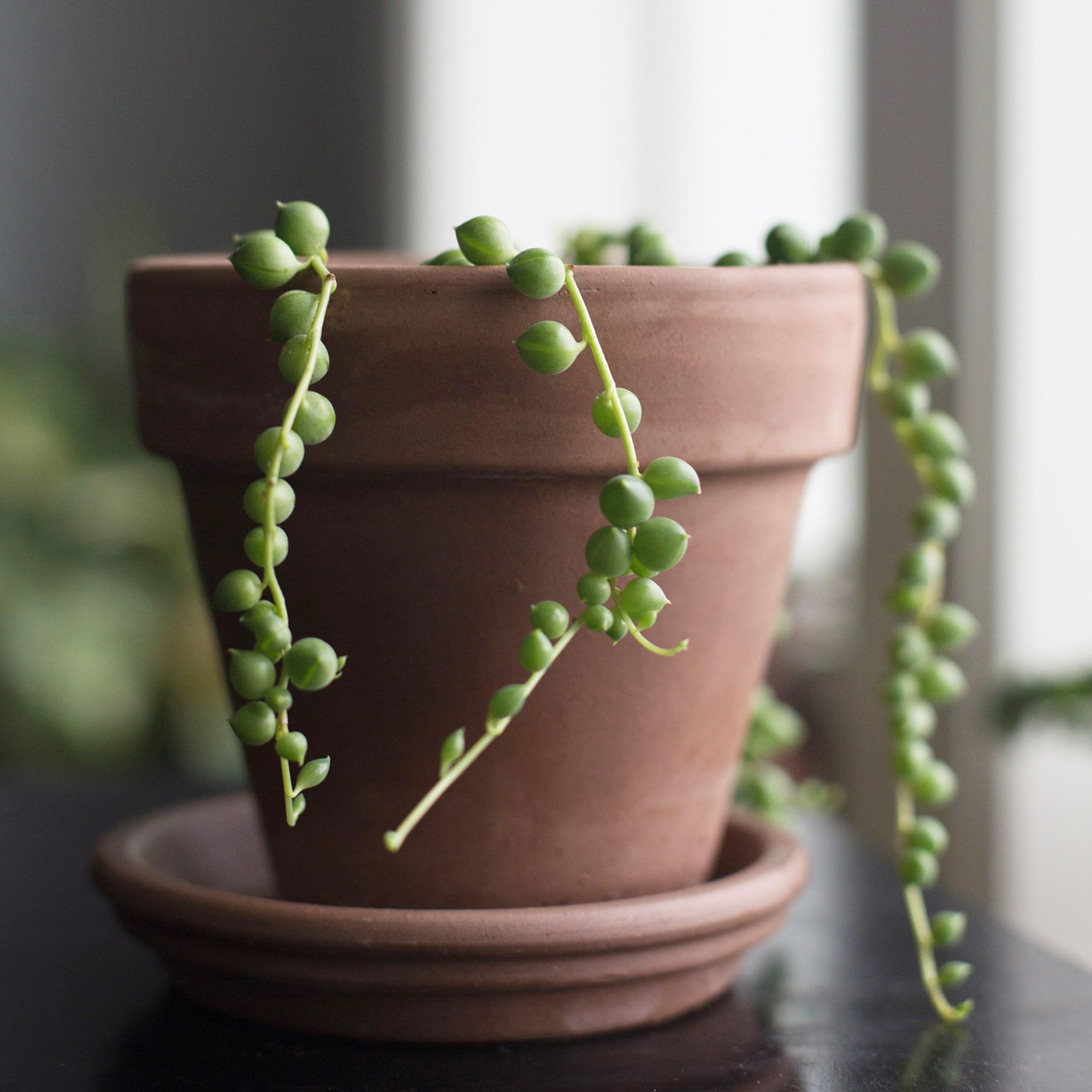
Can you propagate string of pearls in just water?
String of pearls is very easy to propagate. ‘One method is to strip the beads from the end of the stem and place into a vase of water and wait for the roots to grow - be patient as it can take a few months. They can be planted once the roots are about 2.5cm long,’ says Sophie.
‘Alternatively, take a cutting of a stem and lay it on top of some slightly damp soil. Secure it with a loop of thick wire to ensure good contact with the soil,' explains Holly Johnson from Stupid Egg.
'Then, give it a little mist and either leave in a warm, partially sunny spot or cover with a plastic bag secured with an elastic band to create a mini greenhouse. The string will root into the soil and form new shoots, which will gradually spread across the top of the soil,'
‘If you have an established plant that you wish to expand you can repot and coil some of the existing attached strings on top of the new soil around the plant,' Holly adds. 'These will form roots and new strings will sprout creating a fuller and more bushy plant.'
How do I know what's wrong with my string of pearls?
BURST OR MUSHY PEARLS indicate overwatering. ‘Snip off affected vines and ensure your plant has access to plenty of light. Let it dry out thoroughly before returning to a less frequent watering schedule,’ says Jo Lambell, founder of Beards & Daisies.
STUNTED GROWTH Feed fortnightly from March to October and repot in spring.
LOSING PEARLS ‘This suggests that the plant is too cold,’ advises Morag Hill, co-founder of The Little Botanical. If the pearls look wrinkled, however, it is more likely due to underwatering.
SMALL OR SPACED OUT PEARLS ‘Your plant might not be getting enough light,’ says Jo Lambell, founder of Beards & Daisies. ‘Move to a spot with access to brighter, indirect light.’
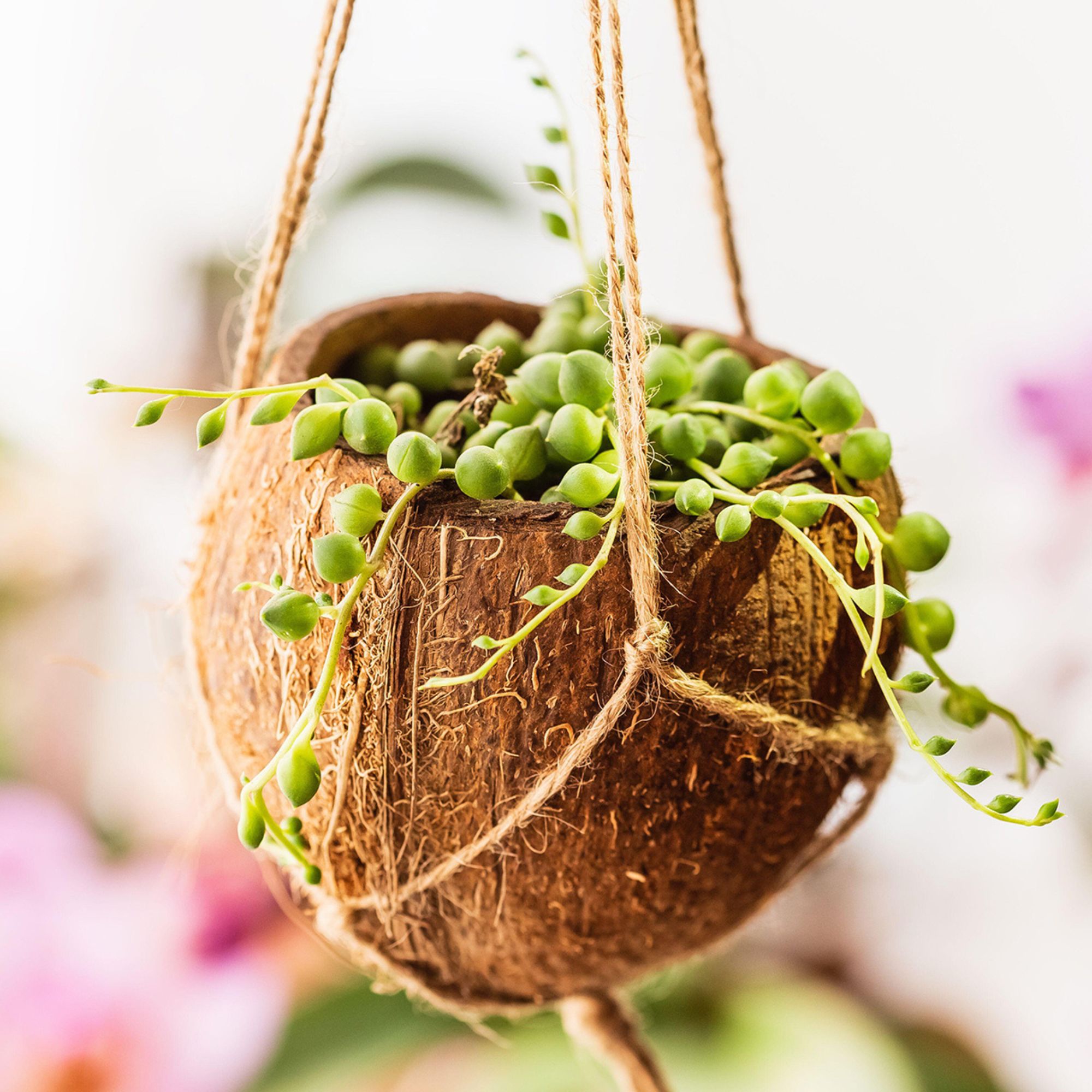
FAQs
Are string of pearls hard to keep?
Proper string of pearls care can be surprisingly easy. Overwatering is the biggest risk factor – so only water when the soil feels wet (a finger inserted a few inches into the soil will provide a good tell) or if the pearls are not as firm as usual. Let the plant guide you to when it needs water, rather than sticking to a regular schedule.
Do string of pearls like to be misted?
No, string of pearls do not like to be misted – in fact this can lead to rot. Instead, bottom water once every two weeks during summer and month during winter.
Do string of pearls have to hang?
No, string of pearls don't have to hang, but as a trailing plant, they do need room to hang. This can be achieved with a hanging pot, which can be attached to hooks on window frames, shelves, or rails; with a pot positioned on a shelf, where the pearls can cascade down; or by planting in a pot with legs or a taller design, which creates space between the edge of the pot and the surface below.

Holly is one of Ideal Home’s content editors. Starting her career in 2018 as a feature writer and sub-editor for Period Living magazine, she has continued this role also adding regular features for Country Homes & Interiors and the Ideal Home website to her roster. Holly has a passion for traditional and country-inspired interiors – especially kitchen design – and is happiest when exploring the countryside and hills of the Lake District. A keen gardener, she is a strong believer that you can never have too many houseplants.
-
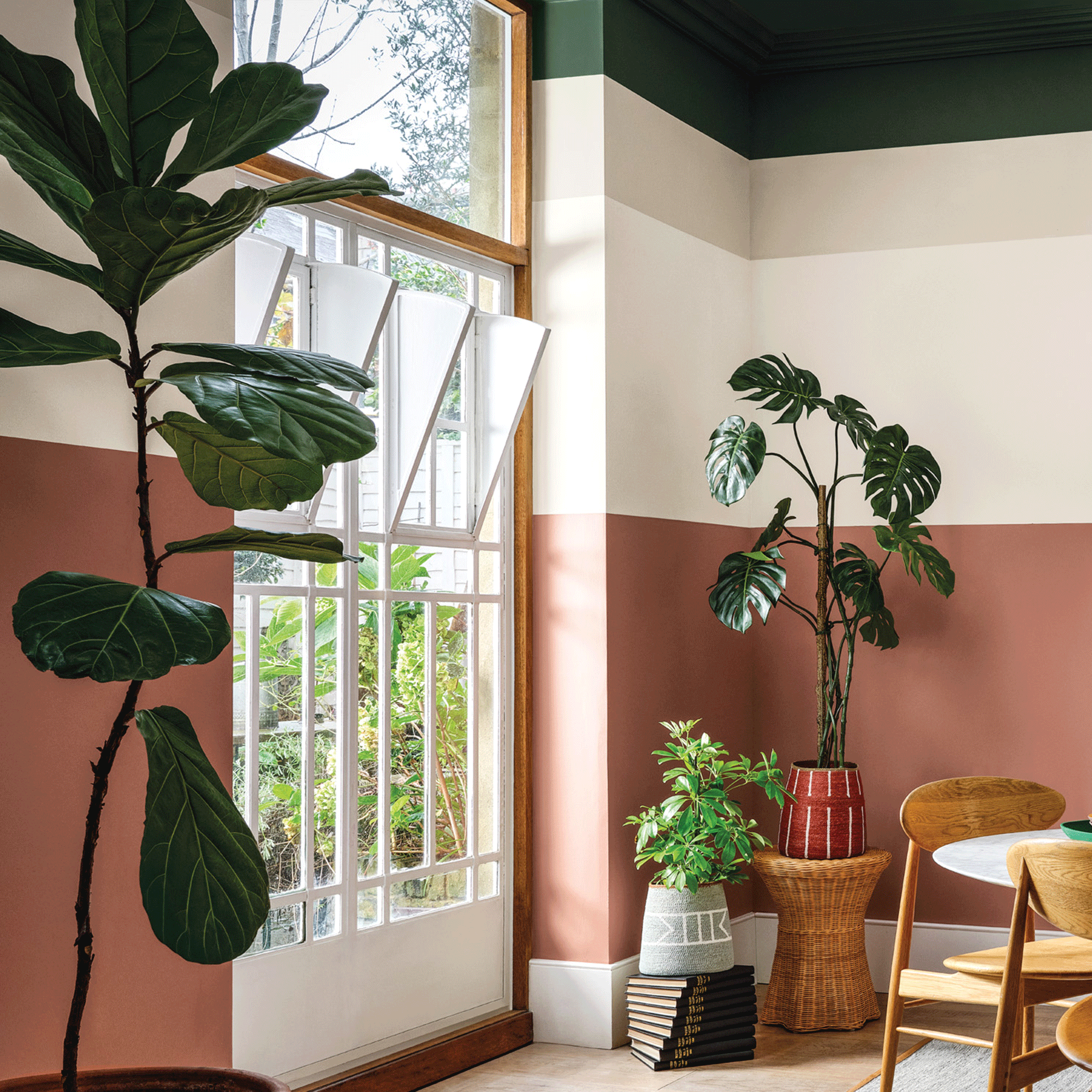 Crown Paint has launched new wall colours for the first time in three years, and changed how I think about neutral shades
Crown Paint has launched new wall colours for the first time in three years, and changed how I think about neutral shadesIs terracotta the ultimate neutral?
By Rebecca Knight
-
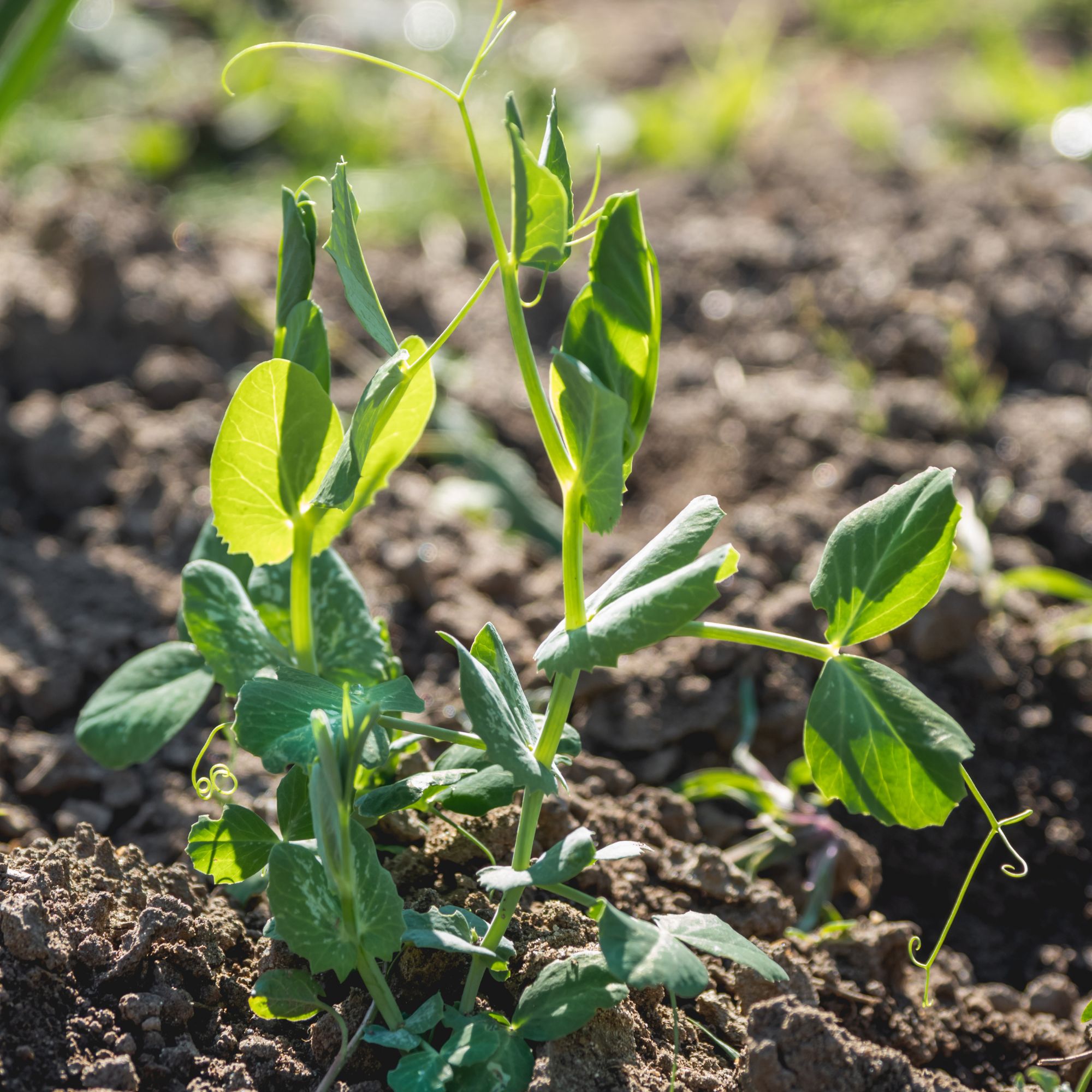 How to protect seedlings from birds – experts say there's a kind and clever way to stop them pecking
How to protect seedlings from birds – experts say there's a kind and clever way to stop them peckingYes, you can protect seedlings from birds without harming your feathered friends...
By Kayleigh Dray
-
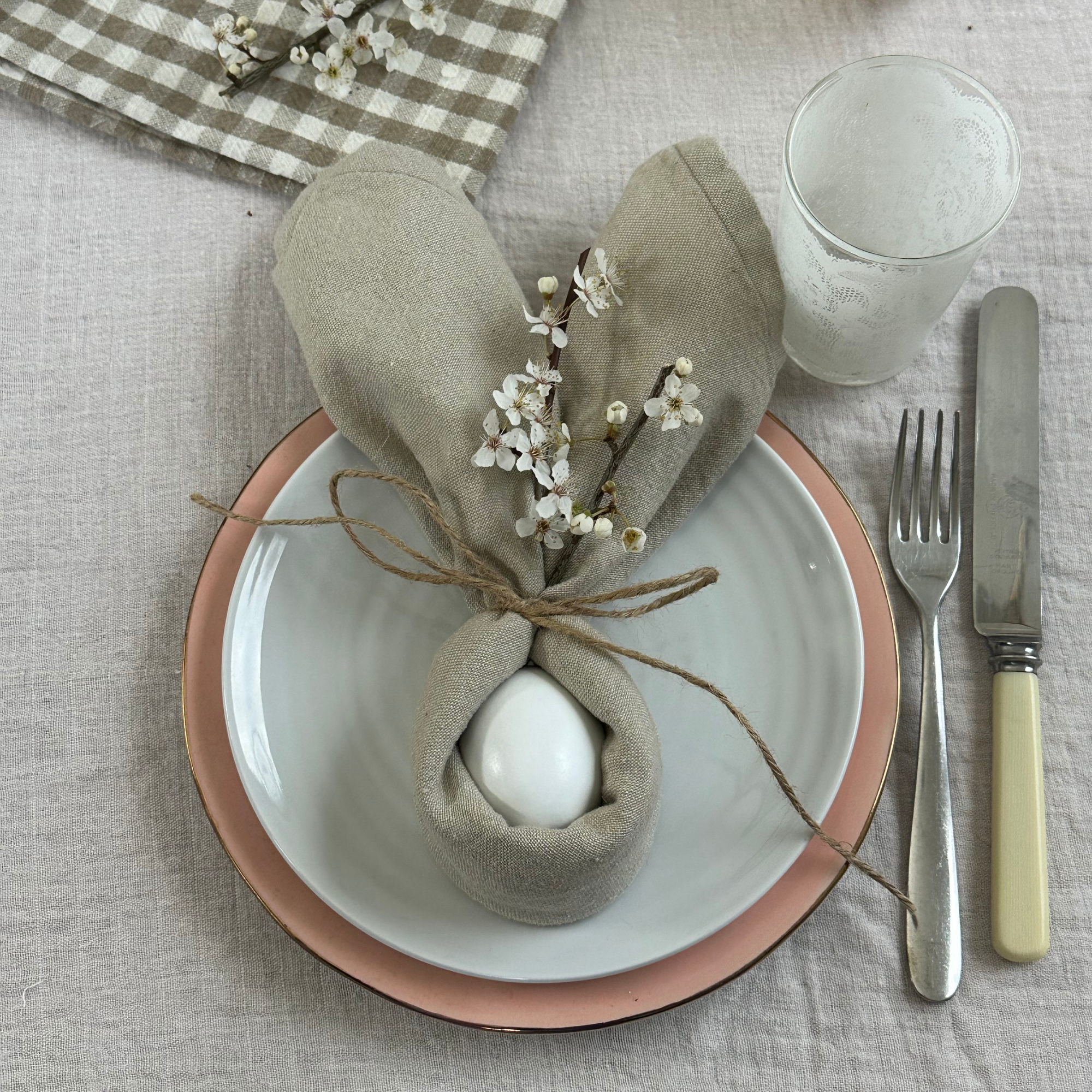 We tried the viral napkin bunny ears hack – it only takes five minutes and will take your Easter table to the next level
We tried the viral napkin bunny ears hack – it only takes five minutes and will take your Easter table to the next levelThis Easter craft is not only beautiful, but really easy to do
By Kezia Reynolds
-
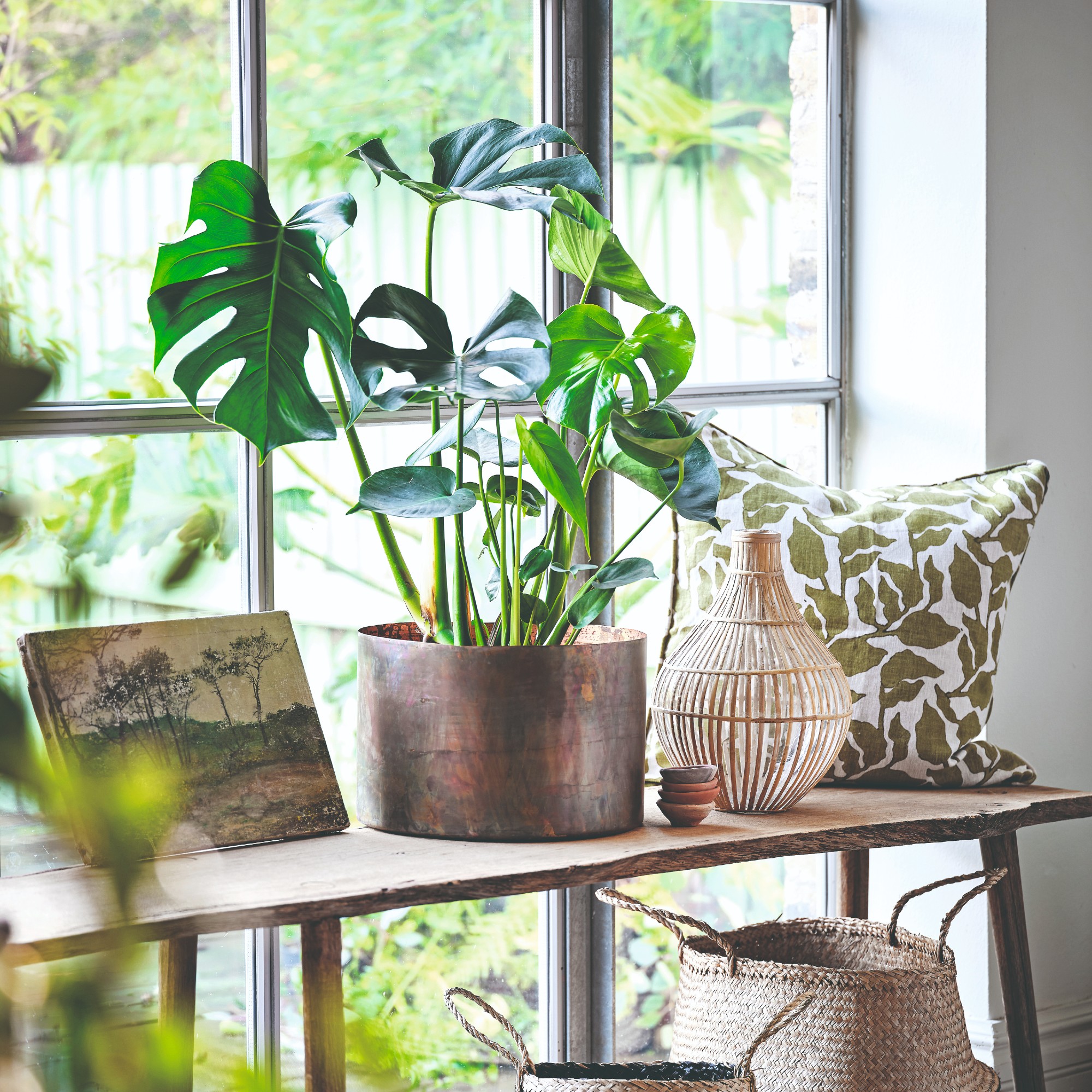 Best soil for Monstera – this is the perfect mix for healthy Swiss cheese plants
Best soil for Monstera – this is the perfect mix for healthy Swiss cheese plantsAll the ingredients you should look out for
By Sophie King
-
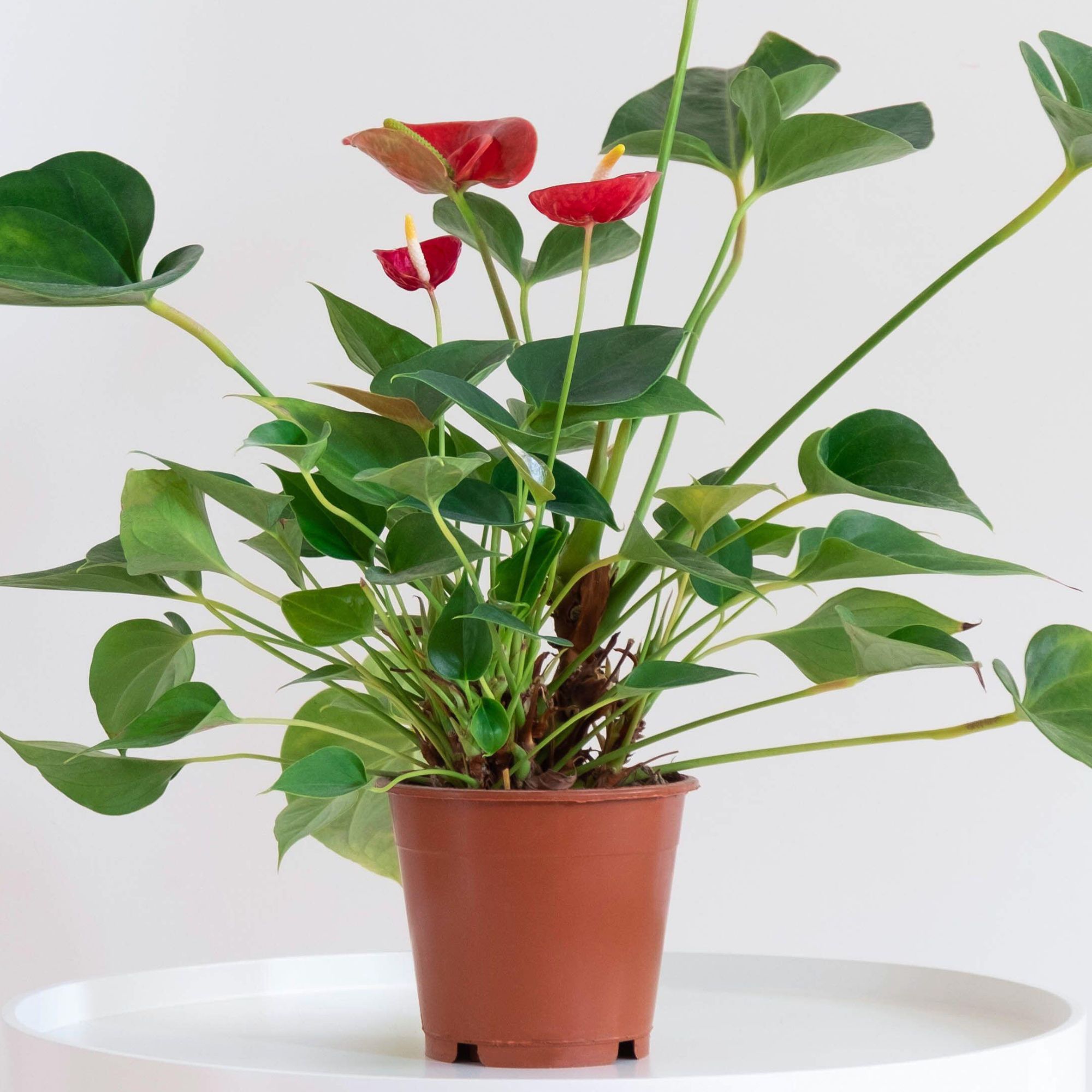 How to propagate anthurium – the three best ways to double these pretty tropical plants
How to propagate anthurium – the three best ways to double these pretty tropical plantsWhether you propagate anthurium through cuttings or separation, you'll love these ways to increase your collection
By Holly Reaney
-
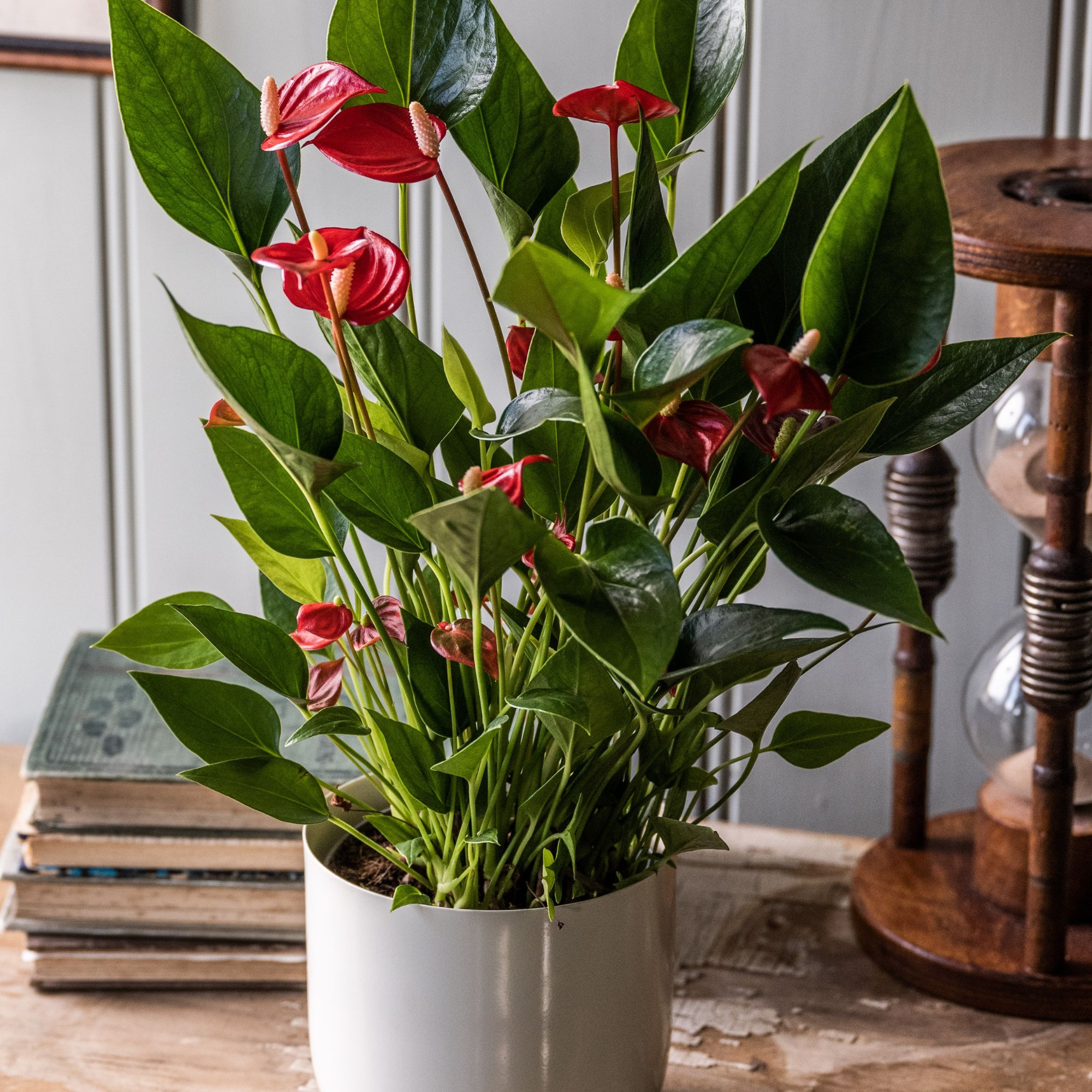 How to care for Anthurium for long-lasting vibrant and tropical colour
How to care for Anthurium for long-lasting vibrant and tropical colourWith their vibrant colours and tropical look, Anthurium andraeanum or Flamingo flowers make for an eye-catching addition to a kitchen, bathroom or conservatory
By Holly Reaney
-
 How to care for spider plants to get the most from this resilient beauty
How to care for spider plants to get the most from this resilient beautyThe retro houseplant is making a comeback – here's how it can thrive
By Holly Reaney
-
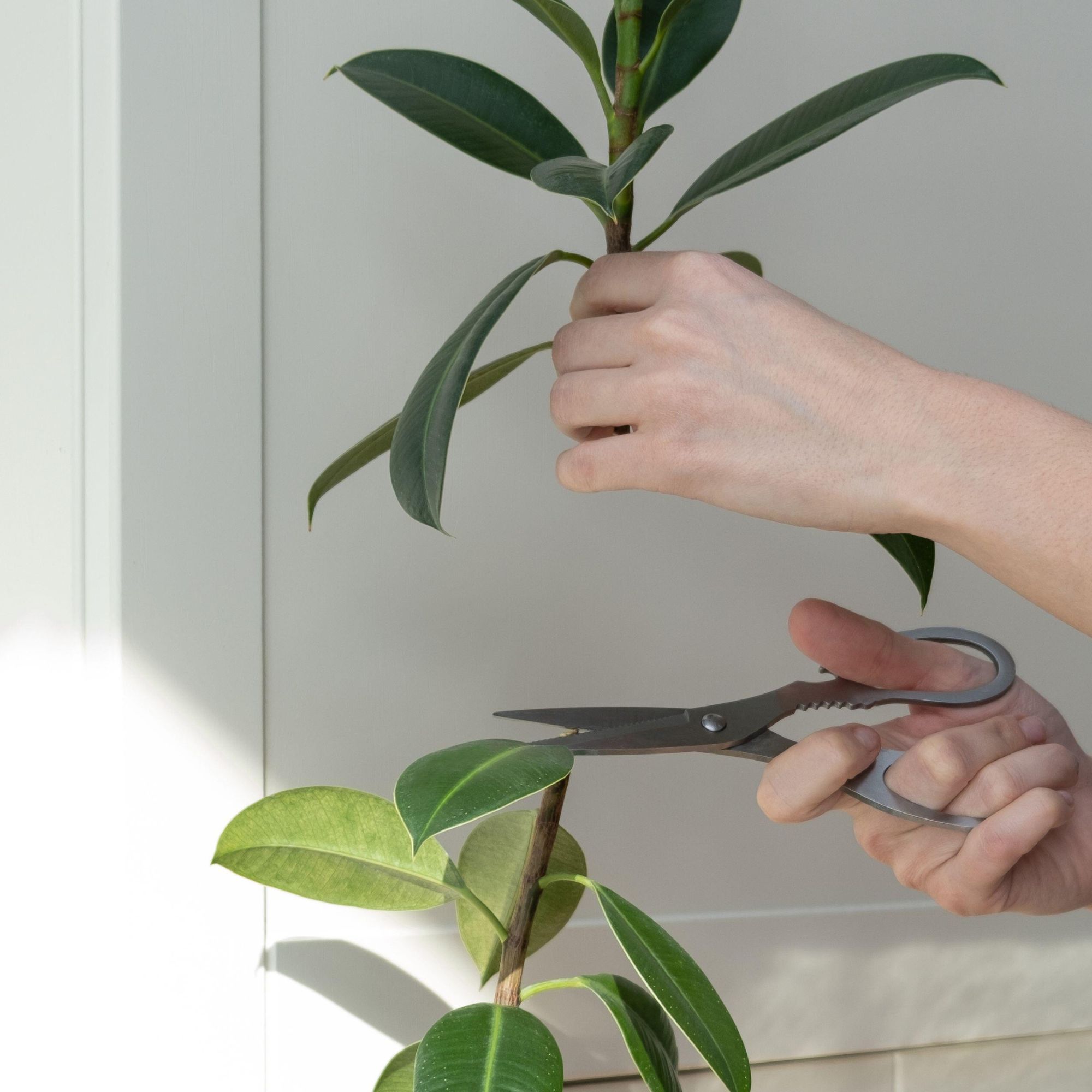 How to propagate a rubber plant - expand your houseplant collection for free
How to propagate a rubber plant - expand your houseplant collection for freeWhy have just one rubber plant when you can have loads?
By Holly Reaney
-
 How to care for a rubber plant – the almost unkillable houseplant
How to care for a rubber plant – the almost unkillable houseplantLow maintenance and fast-growing, the rubber plant is the perfect choice for beginners and ideal for making a statement in a home
By Holly Reaney
-
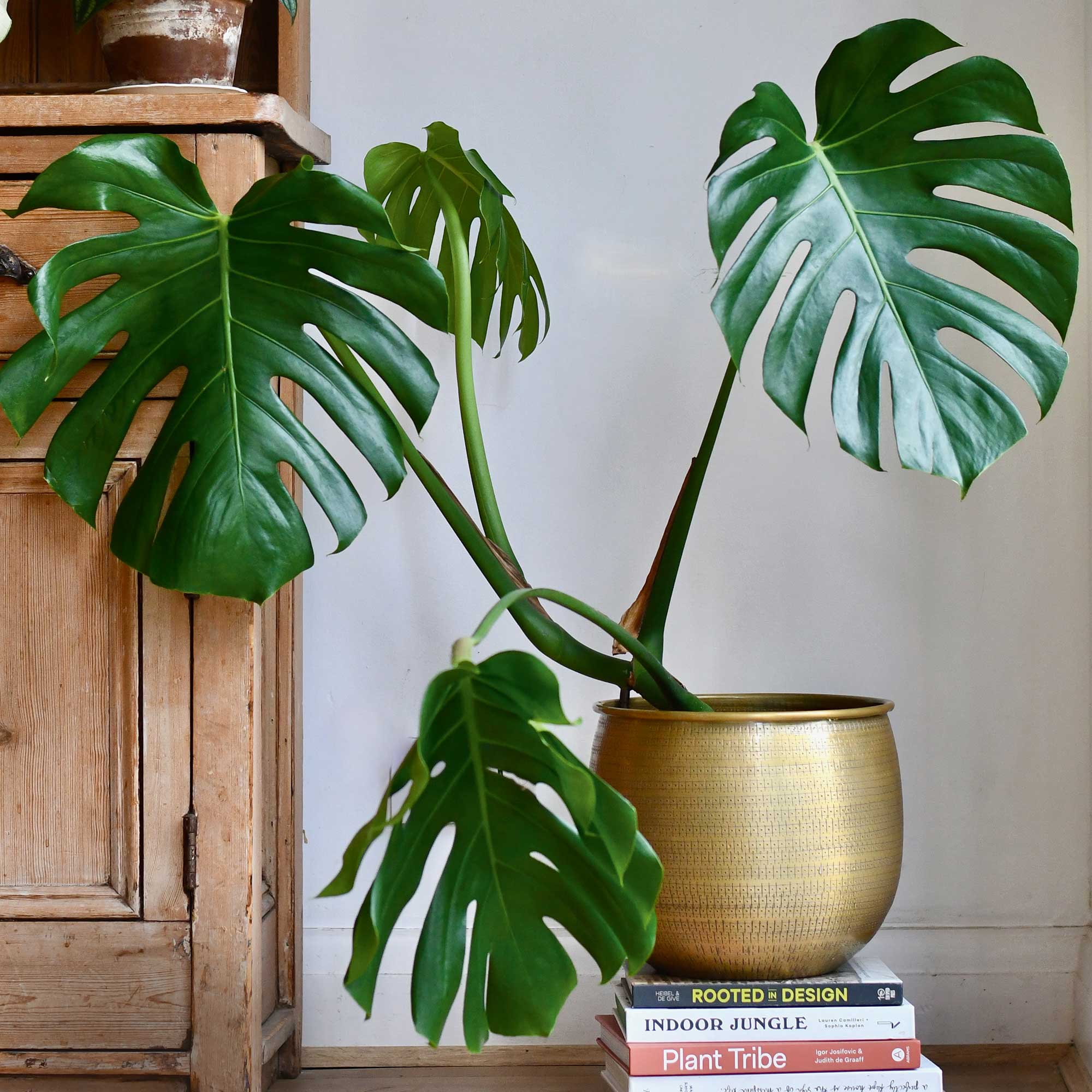 How to care for a monstera deliciosa – the gentle giant of the houseplant world
How to care for a monstera deliciosa – the gentle giant of the houseplant worldHow to care for a monstera deliciosa, including where to position, when to water and how to propagate
By Holly Reaney
-
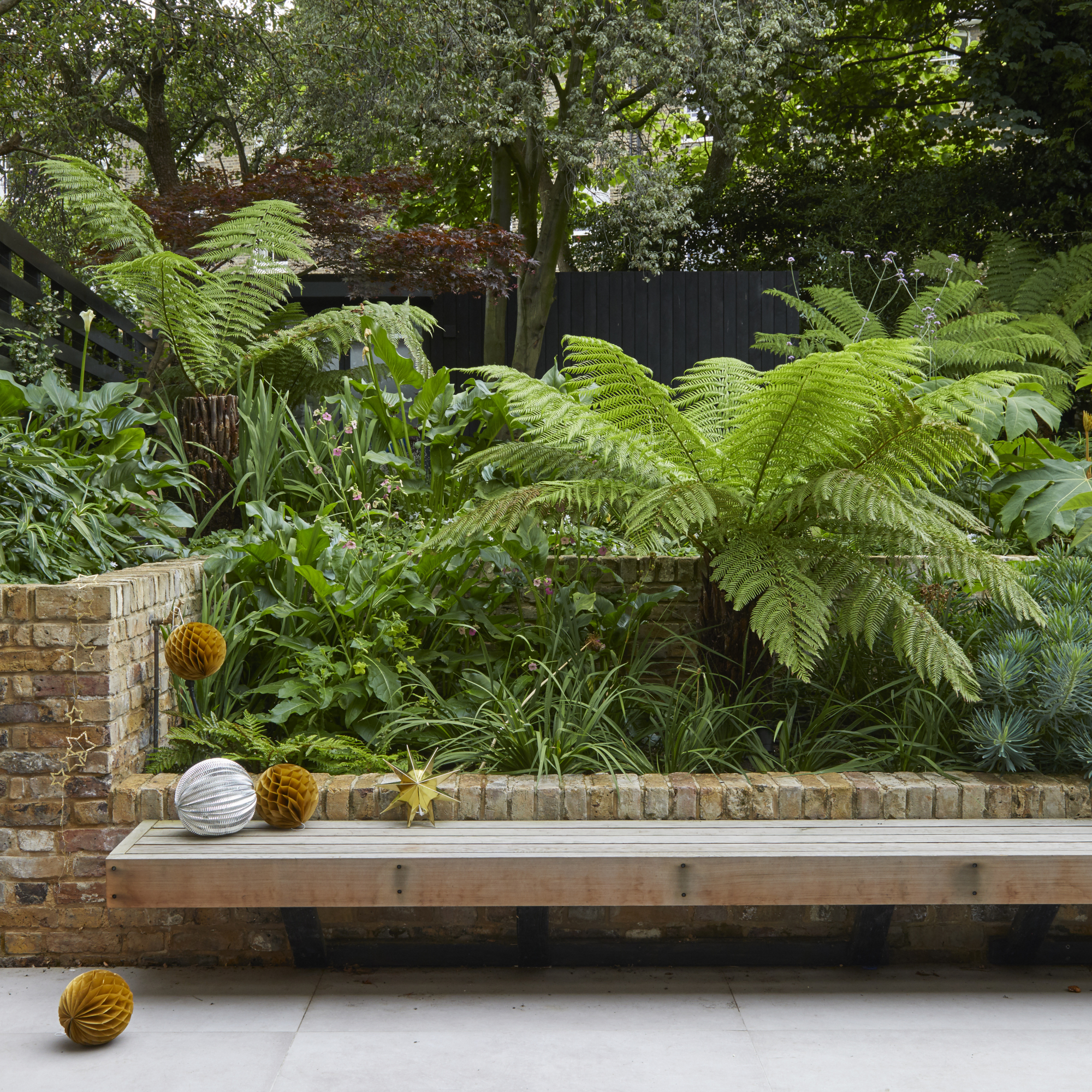 When to cut back ferns to keep them looking their best
When to cut back ferns to keep them looking their bestLearn when to cut back ferns to keep these hardy garden stalwarts in tip-top condition
By Rachel Crow
